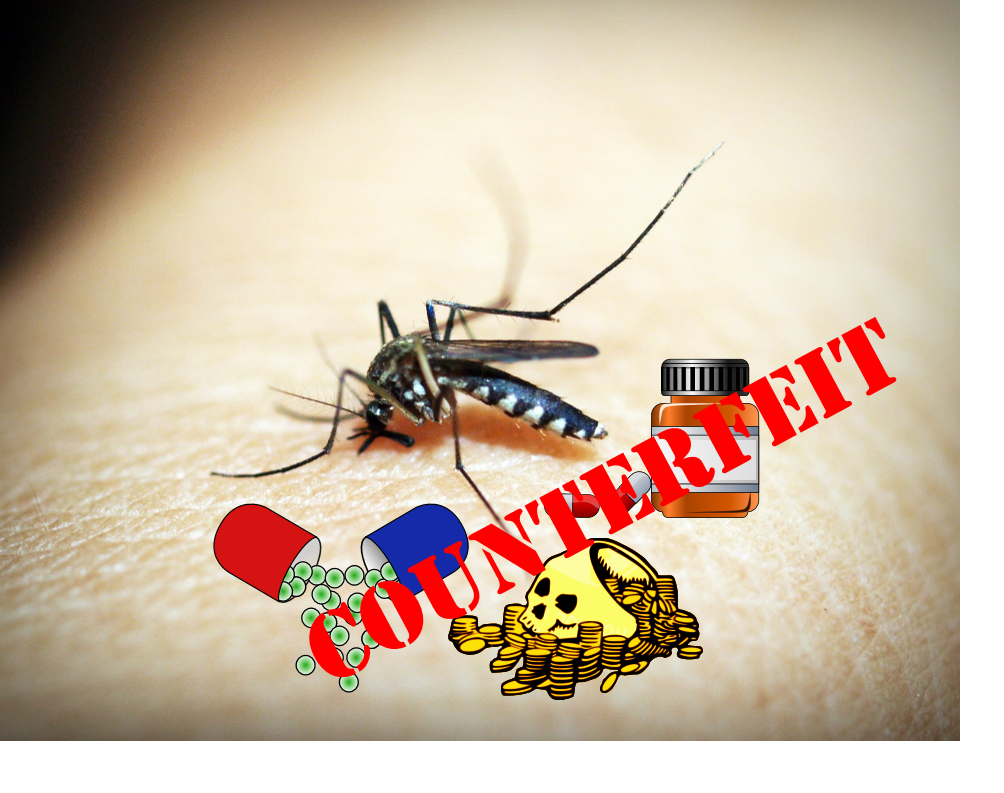While counterfeit medication is a problem everywhere in the world, developing nations suffer from the proliferation of fake drugs more than the developing world. This is due to any number of factors, such as muddled supply chains, inferior quality ingredients, opportunistic charlatans, inferior versions of the drugs being shipped to places that have very little recourse, and more. Today we’ll be discussing a horrific event which happened in the Democratic Republic of Congo last year, where a vital medication for thousands of people was replaced by a different medication, which led to terrible results.
Recently, in the Ituri district of the DNC, which borders Uganda and South Sudan, there has been a malaria outbreak. Diazepam is a common medication used to treat anxiety and seizures (often under the name Valium), but is also used to treat the symptoms of malaria in some places. Unfortunately, haloperidol, an antipsychotic drug used to treat schizophrenia, was found in the medicine people thought was diazepam.
This led to an outbreak where people were having involuntary muscle spasms. When people found that the muscles in their faces, eyes, tongues, necks, and arms were moving of their own accord, they panicked, possibly turning even more strongly to the tainted drugs which originally caused these symptoms.
Around the end of 2014, people were arriving at health centers with the same symptoms of stiffness and involuntary muscle spasms, usually in the neck. The number increased to over 1,000 by August of 2015, and that’s just for the official health facilities.
Due to the resemblance to malaria, a disease not uncommon to the area, doctors suspected an outbreak and began treating patients for it. Thankfully, it was discovered that the symptoms were being caused by toxic substances, which were further traced back to the prescription diazepam. Analysis showed the pills contained haloperidol, which, as mentioned, does not treat malaria and does cause muscle spasms which can be mistaken for malaria.
Médecins Sans Frontières/Doctors Without Borders carried out the initial investigations, which they reported to the DNC’s Ministry of Health and the World Health Organization. They are working together now to discover how those tainted drugs entered the local market and figuring out how to prevent such a thing from happening again.
Unfortunately, it’s going to be a difficult battle, as fake drugs aren’t a local problem caused by a few bad actors. Secret factories pop up all the time around the world to take advantage of the rising cost of pharmaceuticals. People who are caught face relatively little jail time and inadequate fees, and often even if they do serve a reasonable sentence, the damage is already done.
Counterfeit medication is an enormous industry which affects every nation in the world, and governments and medical agencies have only recently come to realize how widespread the problem is.
However, the biggest problem with fake drugs isn’t just that a bunch of people makes money off of others’ suffering. When people learn that a medication caused the very symptoms it was supposed to be preventing, as well as making people more prone to contracting the disease they were fending off, makes them less trusting of medicine in the future. This can lead to further outbreaks in areas where people are outright refusing to take medication thanks to a previously tainted supply.
We need to do more to help those of us who aren’t as fortunate as the rest. When failures like this occur, it only highlights how much more work needs to be done to fix these horrible mistakes. At IDLogiq, we’re working hard to develop new systems that can be used to ensure that counterfeit medications become a thing of the past.


